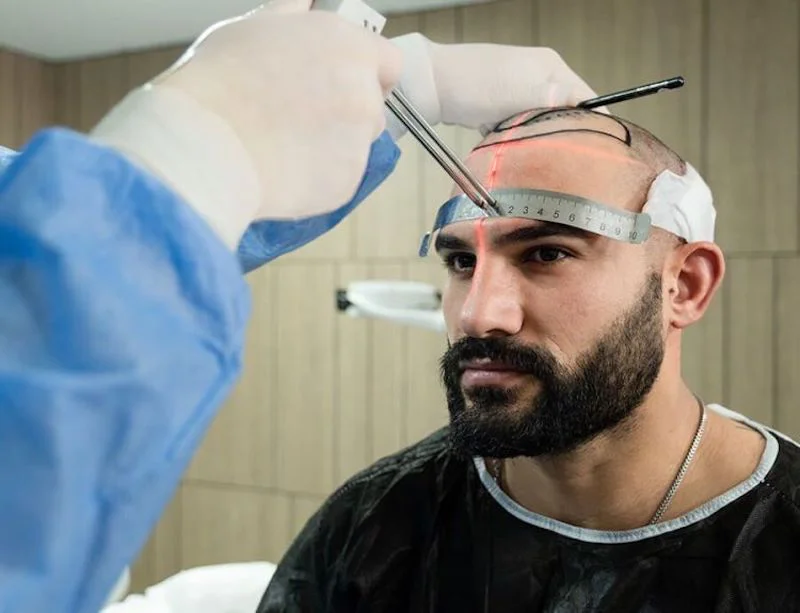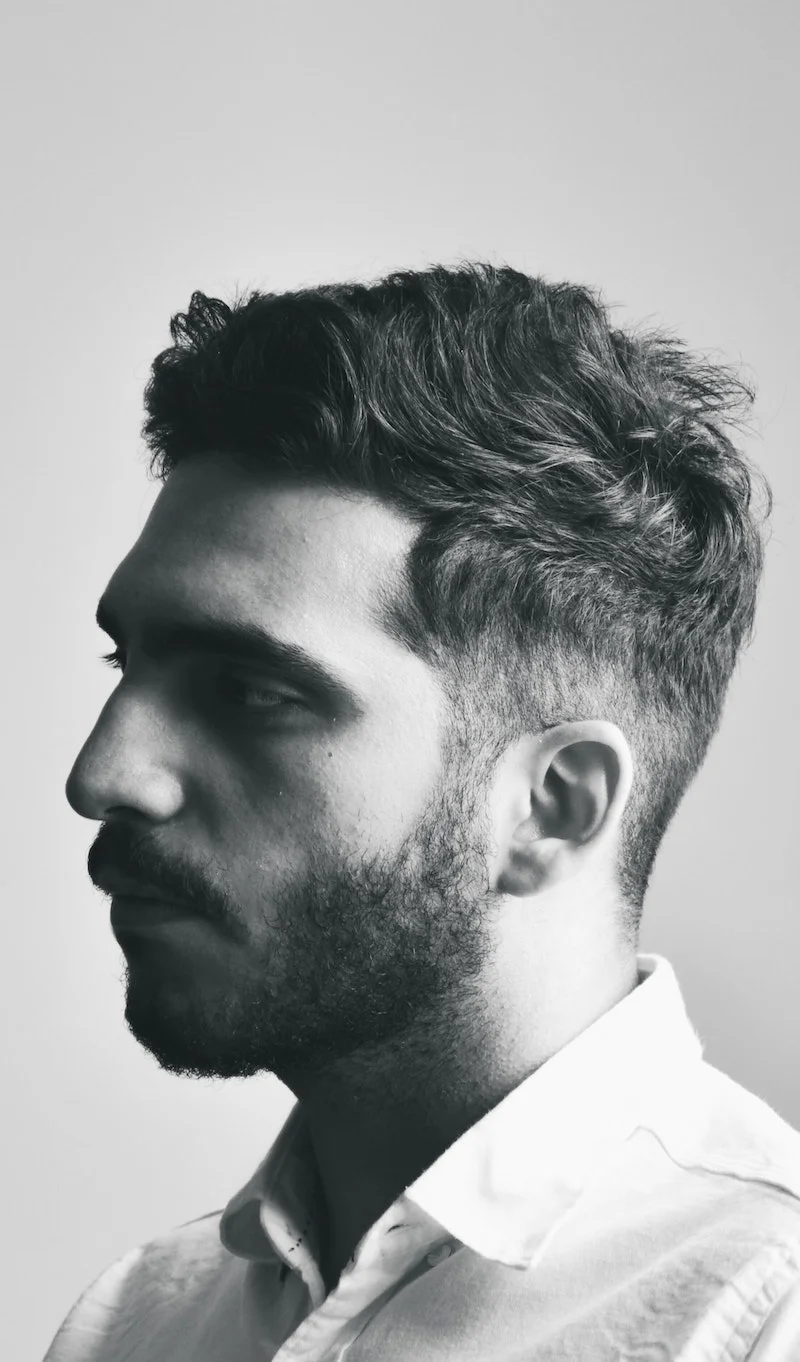The Real Deal on Hair Transplants in Turkey: A Guide From Someone Who’s Seen It All
I’ve spent more than a decade deep in the world of hair restoration, and let me tell you, I’ve seen it all. I’ve gone from prestigious European clinics to consulting for some of the biggest names in Istanbul. I’ve seen lives changed by incredible, artistic work, and I’ve also been the guy called in to figure out how to fix a procedure gone horribly wrong.
In this article
By far, the most common question I get is a simple one: “Why is a hair transplant in Turkey so much cheaper?” It’s a totally fair question, and the answer is a lot deeper than just a good deal.
Let’s be real. When you see those prices, you’re either thrilled or deeply suspicious. The truth is, Istanbul has some of the best-value hair restoration on the planet. But it also has clinics you wouldn’t want to send your worst enemy to. The price tag tells you nothing about the skill of the team, the long-term health of your donor area, or the artistry required for a result that doesn’t scream “I got a hair transplant!”

My goal here isn’t to sell you anything. It’s to download the knowledge I’ve picked up over the years so you can see past the flashy ads and learn how to spot a clinic that will give you a safe, successful, and genuinely natural-looking result.
So, What’s the Real Story on the Price?
First things first: lower cost does not automatically mean lower quality. It’s a result of a completely different economic and operational setup. In a typical clinic in the US or Western Europe, you might pay anywhere from $10,000 to $25,000. Why? Because a single surgeon often does most of the work, seeing maybe one patient a day. Their overheads—from rent to staff salaries—are astronomical.
Turkey plays a different game. In Istanbul, a high-quality procedure from a reputable clinic often falls in the $2,500 to $6,000 range. This huge difference comes down to a few key factors:

- Simple Economics: The cost of living is lower. That means clinic rent, medical supplies, and expert staff salaries are more reasonable. The favorable exchange rate for anyone paying with Dollars, Euros, or Pounds makes a massive difference, and those savings get passed on to you.
- Government Backing: The Turkish government is all-in on medical tourism. They provide incentives and support to clinics that cater to international patients, which keeps the industry competitive and standards high. It’s a core part of their national strategy.
- The All-Inclusive Package: Most Turkish clinics bundle everything into one price. This typically covers the procedure itself, a few nights in a decent hotel, all your airport and clinic transfers, and even a translator. Heads up, though: what’s usually not included is your flight, most of your food, or any extra nights you might want to stay for sightseeing. Always clarify what’s in the package!
- The Technician-Led Team Model: This is the secret sauce most people don’t know about. In most high-volume Istanbul clinics, a qualified lead doctor oversees the whole process. They’ll design your hairline (the most artistic part) and make the critical incisions. But the marathon task of extracting and implanting thousands of grafts is often handled by a team of hyper-specialized technicians. I’ve trained many of these technicians myself, and the best ones are absolute artisans. They handle more grafts in a month than many Western surgeons do in a year. This team approach allows a clinic to help several patients a day, which drastically cuts the cost per person. The quality hinges on the skill of that entire team, not just the famous doctor whose face is on the website.
A busy Istanbul clinic gets an incredible amount of experience. They’ve seen every hair type and every challenge imaginable. But this is also where the risk comes in. A focus on volume can lead to rushed work if a clinic is more interested in numbers than people. The key is finding a place that balances deep experience with a genuine commitment to quality for every single patient.

Your Head is Not a Garden: The Science of a Great Transplant
A hair transplant isn’t just about moving plugs of hair around. It’s a delicate biological procedure, and understanding the basics will empower you to ask the right questions.
Your Donor Area Is a Limited Resource. Period.
If you remember one thing from this article, make it this: the hair on the back and sides of your head (the safe donor area) is finite. Once a graft is taken out, it’s gone forever. You only have so many to spare. A good clinic treats this area like a bank vault. A reckless one will over-harvest to hit a marketing promise of “maximum grafts,” leaving you with a thin, patchy, “moth-eaten” look in the back.
I once consulted on a case for a young man who’d been lured by a “5,000 grafts for $2,000” deal. They took so much from his donor area that it was see-through and scarred. The worst part? The damage was so extensive that he no longer had enough healthy hair for a future repair. A responsible clinic will tell you the right number of grafts for your situation, not just the biggest number they can grab.

Good to know: Graft numbers aren’t arbitrary. To give you a rough idea, someone with early-stage thinning at the temples (a Norwood 3 pattern) might need 2,000-2,800 grafts. Someone with more extensive loss across the front and crown (a Norwood 5) could need 3,500-4,500 grafts. If you’re a Norwood 3 and a clinic is pushing 5,000 grafts, that’s a huge red flag.
The Art of a Natural Hairline
Honestly, anyone can pack hair onto a bald spot. It takes an artist to create a hairline that looks like it grew there naturally. A real hairline is never a perfectly straight line; it’s soft, slightly irregular, and imperfect. The pros use delicate, single-hair grafts for the very front to create a soft, transitional look. Then, they use denser grafts (with 2 or 3 hairs) behind that to build density. They also obsess over the angle and direction, which should be low and forward (about 15-25 degrees). One of the most common signs of a bad transplant is hair sticking straight out at a 45 or 90-degree angle. It’s a dead giveaway and impossible to hide.

FUE vs. Sapphire vs. DHI: Cutting Through the Marketing Hype
Clinics love to promote fancy-sounding techniques. But remember this: the skill of the team matters infinitely more than the specific tool they use. A master carpenter can build a masterpiece with basic tools, while a novice can make a mess with the most expensive gear.
- FUE (Follicular Unit Extraction): This is the foundation of modern hair restoration. It involves extracting individual follicular units (natural groups of 1-4 hairs) one by one from the donor area using a tiny, hollow punch. It leaves behind tiny dot scars that are basically invisible once your hair grows. A key detail is the punch size; anything under 0.9mm is great because it minimizes scarring. And here’s an insider tip: ask about their ‘transection rate’—the percentage of grafts accidentally damaged during extraction. A top-tier team should have a rate below 5%. A high rate means fewer healthy hairs for your head!
- Sapphire FUE: This is an enhancement, not a whole new method. The extraction is still standard FUE. The “sapphire” part refers to the blade used to make the incisions where the new hair will go. These blades are incredibly sharp and can create smaller, cleaner V-shaped channels. This can mean a snugger fit for the graft and potentially faster healing. It’s a nice refinement, but in the hands of a true expert, the results from high-quality steel can be just as good. Don’t pick a clinic just because they say “sapphire.”
- DHI (Direct Hair Implantation): This method is a bit different. It uses a special tool called a Choi Implanter Pen. A technician loads a graft into the pen, and the doctor then makes the incision and implants the graft in one single motion. The main benefit is that the graft spends less time outside the body, and it’s great for adding density between existing hairs without shaving the whole area. The catch? It’s much slower, more laborious, and often more expensive. It also requires an extremely high level of skill to avoid damaging grafts with the pen.
So, which is best? FUE is the proven workhorse. Sapphire is a great incremental upgrade. DHI is a fantastic tool for specific situations. The best clinics are masters of all three and recommend what’s best for you, not what they want to sell that week.

Your Pre-Flight Checklist for Choosing a Clinic
Okay, this is the practical part. How do you actually pick the right place? You have to become an educated buyer. Here’s the checklist I give to my own friends and family.
1. The Consultation is Everything
Your first contact with a clinic tells you so much. Are you talking to a pushy salesperson or a knowledgeable patient coordinator? A good consultation should feel like a free education. They should ask for clear photos of your head (front, top, back, sides) and be brutally honest about whether you’re a good candidate. A clinic that will operate on anyone, especially very young men with aggressive hair loss, is a massive red flag.
2. Ask These Questions (And Listen Carefully to the Answers)
- “Who, specifically, will be designing my hairline and performing the procedure?” Get names. A great clinic is proud of its team. Vague answers are a bad sign. You’re buying the skill of a person, not a brand.
- “Can I see at least 10 before-and-afters of patients with hair loss like mine?” Look for clear, well-lit photos showing the hairline, density from above, and—this is crucial—the healed donor area.
- “How long has the lead technician been with your team?” The consistency and experience of the technical team is just as important as the doctor.
- “What’s your plan for post-op care, especially after I fly home?” A great clinic will give you a detailed plan and a 24/7 contact (like a nurse on WhatsApp) for any questions or concerns you have in the weeks following. This is non-negotiable.
3. Your Pre-Trip Survival Kit
A quick tip: your recovery will be so much more comfortable if you pack a few key items. Buy these before you go:
- A travel neck pillow (you’ll need to sleep upright for the first few nights to manage swelling).
- A few button-down or zip-up shirts (you can’t pull anything over your head!).
- A can of sterile saline spray (like Steri-Wash) to gently mist your grafts and keep them hydrated. It’s a lifesaver.
Recovery, Risks, and The ‘Ugly Duckling’ Phase
A hair transplant is surgery. It’s very safe when done right, but there are risks. A good clinic will be upfront about this. Infection is a risk, so sterile environments are critical. More serious is scalp necrosis (tissue death) from grafts being packed too tightly, which I’ve seen at careless clinics.
I also have to warn you about the “ugly duckling” phase. You will have scabs for a week to 10 days. Then, between weeks 2 and 6, most of the newly transplanted hairs will fall out. THIS IS NORMAL. The follicle is safe underground. But for about two months, you might look even thinner than before you started. New, permanent growth usually kicks in around month 3 or 4. You’ll see a real difference by month 6, but the full, final, thickened result can take a good 12 to 18 months to fully mature.
Finally, a word on oversight. Legitimate clinics in Turkey are licensed by the Turkish Ministry of Health. You can and should ask to see their license. This is your baseline for safety. And please, remember this is all for informational purposes—it’s no substitute for a one-on-one consultation with a qualified doctor who can assess you personally.
Choosing to get a hair transplant is a huge decision. The value in Turkey is real, but it’s not a lottery ticket. It’s earned by doing your homework. Focus on the team’s skill, a plan for a natural result, and the long-term health of your donor area. The price is just one piece of a puzzle that will be with you for the rest of your life.
Inspirational Gallery with Photos
I got the transplant, so why is my new hair falling out?
It’s the question that causes the most panic, but it’s a completely normal part of the process called “shock loss.” After being moved, the transplanted follicles enter a resting phase, shedding the hair shaft around 2 to 4 weeks post-op. Think of it as the follicle rebooting in its new location before it starts producing a new, stronger hair. True, visible growth won’t begin for another 2 to 3 months. So, take a deep breath—it’s a sign the process is working exactly as it should.
A good hair transplant is invisible engineering, but a great one is visible art. The hairline is the artist’s signature.
When vetting a clinic, the all-inclusive package is standard, but the quality varies wildly. Scrutinize the details. Does
FUE (Follicular Unit Extraction): This is the gold standard. Individual follicular units are extracted from the donor area and then placed into incisions made by the surgeon. It’s versatile and excellent for covering large areas.
DHI (Direct Hair Implantation): A variation of FUE where extraction is similar, but implantation is done using a special tool called a Choi Implanter Pen. This pen injects the follicle directly without a prior incision. It offers great control over angle and density, often favored for densifying existing hair without shaving the entire head.
Neither is universally
Important point: Your donor area—the back and sides of your head—is the most valuable real estate in this process. It is a finite, non-renewable resource. A key sign of an irresponsible clinic is the willingness to
- Reduced post-op scabbing and itching.
- Optimal graft hydration and survival rate.
- A clean scalp, dramatically minimizing infection risk.
The secret? Your commitment to the first 10 days of aftercare. This isn’t the time to improvise. It means diligently using the sterile saline spray as instructed, often hourly for the first few days, and following the clinic’s unique protocol for that all-important first wash. The result you see a year later is built on the foundation you lay in this critical healing period.
According to the International Society of Hair Restoration Surgery (ISHRS), only about 60% of the final result is typically visible by the 6-month mark post-procedure.
This statistic is crucial for managing expectations. Your journey doesn’t end when you leave the clinic; it’s just beginning. The period between months 2 and 5 can be slow and frustrating. The real “wow” moments often happen between months 6 and 10, as the hair grows, thickens, and matures. Full, final results can take up to 18 months, especially for the crown area. Patience is a mandatory part of the treatment.
Before you even think about booking, have a list of non-negotiable questions for your video consultation:
- Who, specifically, will be designing my hairline? The doctor or a consultant?
- Will the doctor be making all the incisions in the recipient area?
- How many procedures does the clinic perform per day?
- Can I see at least three video testimonials of patients with a similar age and hair loss pattern to mine?
- What is your protocol if the result is unsatisfactory?
A hair transplant brilliantly restores what you’ve lost, but it doesn’t halt the progression of male pattern baldness in your native, non-transplanted hair. For a truly lasting result, consider it a key part of a bigger strategy. Many of the world’s best surgeons recommend a combined approach, using medically-proven treatments like Finasteride or topical Minoxidil to stabilize further loss. This ensures your new hair blends seamlessly with your old for decades to come.










